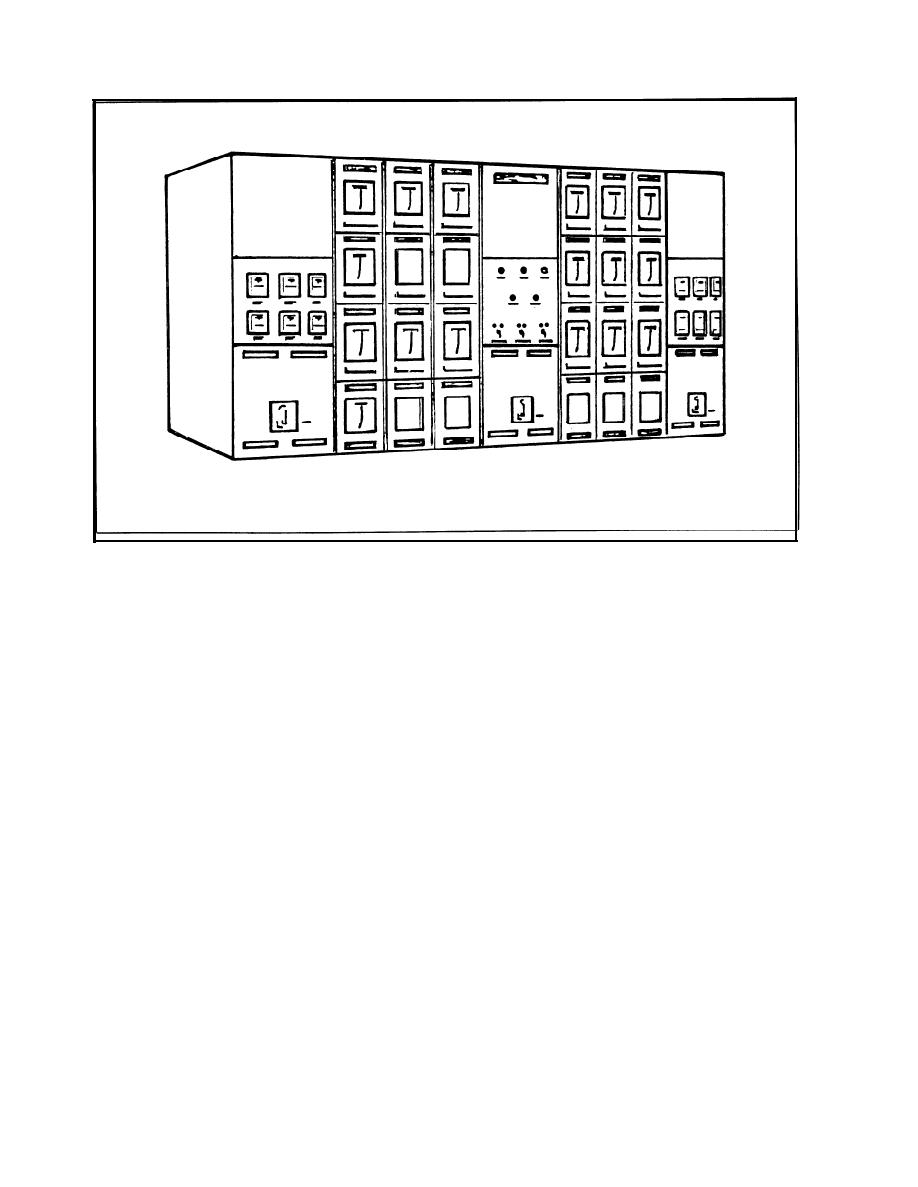

Custom Search
|
|

|
||
 TM 5-685/NAVFAC MO-912
Figure 5-l. Typical arrangement of metal enclosed switchgear.
ate. Arcing and intermediate contacts are adjusted
(d) Some manual breakers require several
to open after the main contacts open to reduce burn-
up-down strokes to fully charge. The springs are
ing or pitting of the main contacts.
released on the final downward stroke. In either of
(i) A typical power sensor for an air circuit
the manual units, there is no motion of the contacts
breaker precisely controls the breaker opening time
until the springs are released.
in response to a specified level of fault current. Most
(e) Electrical quick-make/quick-break break-
units function as overcurrent trip devices and con-
ers are operated by a motor or solenoid. In small
sist of a solenoid tripper and solid-state compo-
units, a solenoid is used to conserve space. In large
nents. The solid-state components are part of the
sizes, an AC/DC motor is used to keep control-power
power sensor and provide precise and sensitive trip
requirements low (4 amps at 230 volts).
signals.
(f) When the solenoid is energized, the sole-
(2) Molded-c ase circuit breakers. Low current
noid charges the closing springs and drives the
and low energy power circuits are usually controlled
mechanism past the central/neutral point in one
by molded-case circuit breakers. The trip elements
continuous motion. Motor-operated mechanisms au-
act directly to release the breaker latch when the
tomatically charge the closing springs to a predeter-
current exceeds the calibrated current magnitude.
mined level. When a signal to close is delivered, the
Typical time-current characteristic curves for
springs are released and the breaker contacts are
molded-case circuit breakers are shown in figure
closed. The motor or solenoid does not aid in the
5-3.
closing stroke; the springs supply all the closing
(a) Thermal-magnetic circuit breakers have
power. There is sufficient stored-energy to close the
a thermal bi-metallic element for an inverse time-
contacts under short-circuit conditions. Energy for
current relationship to protect against sustained
opening the contacts is stored during the closing
overloads. This type also has an instantaneous mag-
action.
netic trip element for short-circuit protection.
(g) A second set of springs opens the contacts
(b) Magnetic trip-only circuit breakers have
when the breaker receives a trip impulse or signal.
no thermal elements. This type has a magnetic trip-
The breaker can be operated manually for mainte-
ping arrangement to trip instantaneously, with no
nance by a detachable handle.
purposely introduced time delay, at currents equal
(h) Circuit breakers usually have two or
to, or above, the trip setting. These are used only for
three sets of contacts: main; arcing; and intermedi-
5-2
|
 
|
|
 |
||